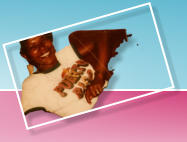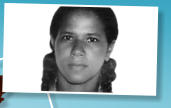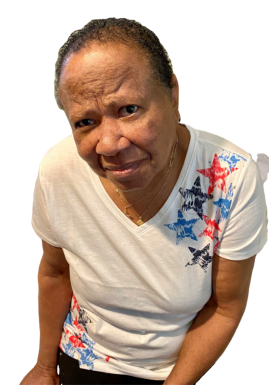
Poetry Oasis Blog
Therese Atkins with a help of a shunt, her journey without Physical and occupational therapy, living a normal life with the symptoms associated with normal pressure of hydrocephalus.



For
Therese,
her
condition
started
a
while
back
about
six
years
ago
December
20
th
,
2016,
she
visited
the
Bellin
Health
Physical
Medicine
Neuro
Consultant,
for
severe
pain
in
her
head,
the
attending
physician
Dr.
Brian
A
Knapp,
evaluated
her
and
his
diagnosis
was
that
she
suffered
from
Cerebrovascular
Accident
due
to
Thrombosis
of
left
Anterior
Cerebral
Artery.
Therese
is
a
patient
of
Hydrocephalus,
before
recently
I
did
not
know what that is much less knowing my wife is a patient of this illness.
However
I
have
taken
the
liberty
to
research
its
meaning,
Hydrocephalus
is
the
buildup
of
too
much
cerebrospinal
fluid
in
the
brain.
Normally,
this
fluid
cushions
your
brain.
When
you
have
too
much,
though,
it
puts harmful pressure on your brain.
THERESE SURGICAL HISTORY BEFORE AND AFTER
NEXT SIGNS TO LOOK FOR AFTER A SUCCESSFUL VP SHUNTING
Therese Atkins Story
DAILY LIFE
Folks
the
illness
Hydrocephalus
affects
the
brain
of
the
patient
in
ways
unimaginable,
the
patient
has
aggressive
moods
that
develop
as
a
side
effect
of
the
Shunt
placement,
they
have
short
or
none
at
all
verbal
conversation,
and
they
tend
to
have
memory
blockage,
those
moods
affect
the
communication
between
you
and the patient, but to the patient their actions are normal.
Six
months
later
more
vivid
signs
are
shown
by
the
patient,
depending
on
which
side
the
implant
is
placed
in
the
head
the
patient
tends
to
lean
heavily
on
that
side,
sometimes
they
will
clutch
the
head
and
rub
vigorously
or they will quench straightening the leg the side of the implant,
One
eye
the
one
on
the
side
of
the
implant
will
water
all
day
long,
bowel
movement
becomes
harder
to
perform
and
most
time
they
soil
the
bed,
they
are
not
able
to
get
up
and
urinate
so
they
come
as
they
please,
walking
becomes a burden to them so you will need a wheelchair for a short commute.
More
signs
to
look
for
but
before
we
move
further
ahead
if
you
are
the
caregiver
that
action
will
annoy
you
because
you
expect
normal
behavior,
if
so
please
don’t
frustrate
yourself
be
patient
use
your
charm
instead
of
your
anger.
Continue.
There
will
be
times
eating
and
chewing
and
swallowing
their
food
they
do
it
at
a
rapid
pace,
you
got
to
carefully
watch them when feeding them.
For
reference
sake
let's
say
the
placement
of
the
VP
Shunt
is
on
the
right
side
of
the
patient's
head
like
it
is
in
Therese's
head,
you
will
notice
a
stiffness
in
the
patient's
right
arm,
and
a
continuous
shaking
of
the
hands
this
is
normal
for
the
patient
is
an
uncontrolled
reflects,
be patient it stops after a while.
During
the
hours
of
the
evening
you
may
notice
the
patient
rubbing
the
head
it
is
natural
the
patient
may
be
having
a
slight
headache,
I
was
instructed
to
give
her
Tylenol
as
needed
Therese
started
showing
signs
of
memory
loss,
she
looks
straight
into
your
f
a
c
e
but
does
not
comprehend
simple
instructions,
and
her
reaction
is
to
smile
at
you,
yes
she
is
having
short-term
memory
loss,
more
like
intermittent
memory
loss,
after
a
long
while
she
regains
her
composure
and
performs
the
instruction as ordered.
The
very
first
three
weeks
after
taking
Therese
home
I
witness
quite
an
episode
of
continuous
vomiting,
after
every
meal
Therese
would
eventually
vomit
everything,
refrain
from
giving
the
patient
greasy
foods,
starchy
foods
like
potatoes, red meat, and so forth it is better to feed them bowl of clear soup broth, cereal or pureed mix fruits,
Avoid
feeding
them
at
night
anything
passes
six
is
big
trouble
for
you.
You
will
have
to
stay
up
late
into
the
wee
hours
of
the
morning
monitoring
the
patient
in
her
sleep,
that
is
if
you
are
lucky
the
patient
falls
asleep,
believe
me
staying
up
is
better
than
having
the
patient
choke
on
the
slime
that
comes
out
of
her
tummy.
Yes
Sir
I
did
have a rough three to four weeks of late-night monitoring.
Grooming:
The
patient
will
show
signs
of
vertigo
after
eight
months
of
living
with
the
shunt
it
will
be
necessary
to
take
over
the
grooming
in
my
case
I
took
over
her
grooming
on
week
one
after
she
came
home,
get
the
necessary
equipment
stuff
like
a
bath
chair,
large
basin
or
portable
tub,
I
do
not
recommend
taking
the
patient
to
the
shower
even
though
you
have
a
walk-in
shower,
a
fall
is
the
last
thing
you
want
to
have
to
happen
to
the
patient,
then
its
all
over,
if
you
must
take
the
patient
to
the
shower
make
sure
you
have
the
right
amount
of
help
to
support
or
carry
the
patient.
In
grooming
the
patient
there
are
some
uncomfortable
things
you
the
caregiver
will have to perform
1
.
After every bowel movement wipe out the patient's bottom, and clean after every sponge bath
2
.
Brush
the
patient
teeth
after
every
meal,
and
make
sure
you
have
the
patient
shake
water
in
their
mouth
after
eating
anything,
believe
me,
the
patient
is
not
able
to
empty
the
mouth
of
the
excess
food
particles
so
their
mouth
cheeks
are
full
of
unwanted
food,
shaking water will clear it out
3
.
After
every
sponge
bath
and
lotion,
the
patient
to
maintain
a
soft
skin
complexion
and
avoid
bed
sores,
during
the
patient's
sponge
bath make sure to dosh her private parts.
4
.
Her
head
is
most
important
first
to
witness
if
there
is
any
redness
in
the
shunt
area
or
bleeding,
next
is
to
avoid
dandruff
on
her
scalp that is to avoid complications and also for comfortable styling.
5
.
A change of pull-ups would be advisable every four hours and check for any signs of formality or severe order other than urine.
This
is
a
small
sample
that
needs
to
be
done
to
your
patient
it
will
help
you
to
make
her
living
as
comfortable
as
possible
under
the
circumstances
of
having
to
live
with
a
placement
Shun.
Make
sure
the
patient
is
being
fed
on
time
choose
the
right
menu,
the
right
diet,
but
most
of
all
the
right
time,
make
sure
the
patient
is
changing
clothes
daily
or
as
needed
of
course
this
will
eventually
mount
up
your
water
and
gas
bill
but
to
your
love
ones
I
am
sure
you
will
agree
its
worth
every
penny.
Last
but
not
least
you
need
to
follow
the
recommended
doctor checkup that is scheduled for your patient, which I am going to tell you more about after the posted Therese six-month checkup.
THERESE MEDICAL HISTORY

B
L
O
G
W





Faoward to PG 6













